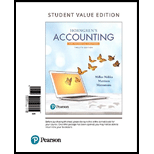
Concept explainers
Determining asset cost, preparing
Learning Objectives 1, 2
1. Units-of-production, 12/31/18, Dep. Exp. $24,000
On January 3, 2018, Rapid Delivery Service purchased a truck at a cost of $100,000. Before placing the truck in service, Rapid spent $3,000 painting it, $600 replacing tires, and $10,400 overhauling the engine. The truck should remain in service for five years and have a residual value of $12,000. The truck’s annual mileage is expected to be 32,000 miles in each of the first four years and 8,000 miles in the fifth year−136,000 miles in total, In deciding which depreciation method to use, Andy Sargeant, the general manager, requests a depreciation schedule for each of the depreciation methods (straight-line, units-of-production, and double-declining-balance).
Requirements
- Prepare a depreciation schedule for each depreciation method, showing asset cost, depreciation expense,
accumulated depreciation , and asset book value. - Rapid prepared financial statements using the depreciation method that reports the highest net income in the early years of asset use. Consider the first year that Rapid uses the truck. Identify the depreciation method that meets the company’s objectives.
Want to see the full answer?
Check out a sample textbook solution
Chapter 10 Solutions
Horngren's Accounting, The Financial Chapters, Student Value Edition Plus MyLab Accounting with Pearson eText - Access Card Package (12th Edition)
- Century 21 Accounting Multicolumn JournalAccountingISBN:9781337679503Author:GilbertsonPublisher:Cengage
 College Accounting, Chapters 1-27AccountingISBN:9781337794756Author:HEINTZ, James A.Publisher:Cengage Learning,
College Accounting, Chapters 1-27AccountingISBN:9781337794756Author:HEINTZ, James A.Publisher:Cengage Learning,



